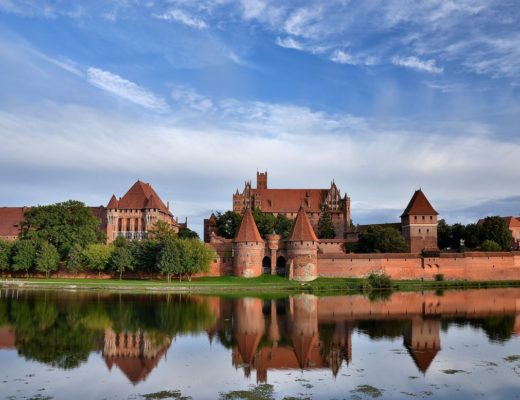For most tourist visiting Spain, Cordoba is a quick 3-4 hrs stop on the bus tour trough Spain. They visit world famous Mezquita, maybe take a quick walk by the Roman bridge, and to grab a bite to eat and a drink, before heading to Seville or Madrid. While one must visit Mezquita, Cordoba has much, much more to offer. From bewitching narrow streets filled with colorful flowers and wrought iron balconies, to its patios or courtyards. Hidden inside almost every home is an inner courtyard decorated with lush green plants and flowers. Cordoba is picture perfect Spanish town. And if you love photography, you will be in heaven. Visit in April to see most flowers and orange trees bloom.
Above all, though, Cordoba is a shining example of an Andalusian city. You only have to stroll the tapas bars in the evening, witness a flamenco performance or admire the whitewashed houses and cobbled streets to realize that you are at the heart of what is a typically southern Spanish province.
Getting There
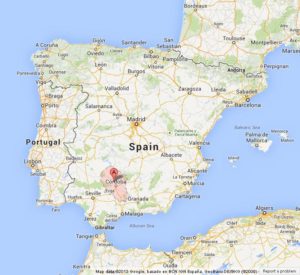
Cordoba-on-Map-of-Spain
Cordoba is situated in the Spanish region of Andalusia. The distance between Cordoba and Sevilla is 140 km (90 miles), Cordoba – Malaga 160 km (100 miles) and Cordoba – Granada 155 km (95 miles).
It is 3.5 hrs drive from Madrid. The easiest way to get directly to Cordoba from US or rest of Europe is to fly to Seville or Malaga and take the train to Cordoba central station. Trains are very comfortable and fast. It only takes 20 minutes to walk from the train station to the Mezquita, Cordoba’s most famous monument. Tickets can be booked online.
We drove from Toledo, it was, less than 3 hrs., and the highways were excellent.
If you drive from Seville, it’s less than 2 hrs. and about 2 hrs. from Malaga and Granada.
Brief History
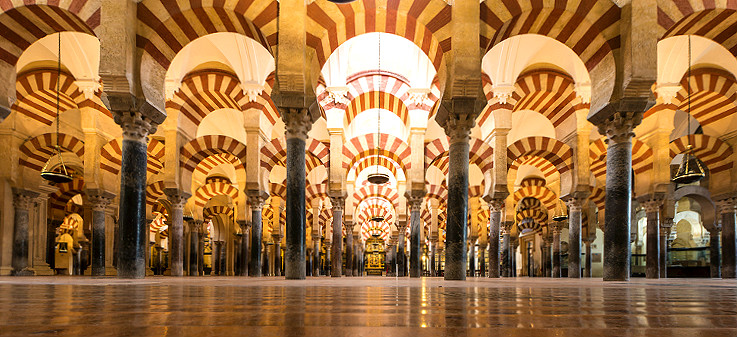
Arches-Mezquita-Cordoba
Romans
History shows how Cordoba started off as a bustling Roman metropolis. Founded in 152 BC, it was named as the capital of Hispania Baetica. Today, there are reminders of the elegance of the Roman era. One of the most prominent is the Roman bridge that crosses the River Guadalquivir.
Visigoths
In the 5th century, however, Cordoba was abandoned by its Roman rulers. Their civilization quickly faded, once elegant buildings crumbled and what was left of the city fell to the advancing hordes of Vandals and Visigoths.
Moors
In 756 AD, the city came under the control of Abd ar-Rahman I of Damascus. Under his rule, Cordoba came to play a critical role in the newly dominated Moorish Spain. Abd ar-Rahman went on to build the Mezquita. Under his successors, the city’s mosque became ever more elaborate, as did the city itself.
Christians
It remained a Moorish city until the arrival of Ferdinand, King of Castile and León in 1236. From that day on, the city became a Christian center. From the 13th century, convents, monasteries and churches were built here in an attempt to remove all Moorish influences in the city. This included the building of a Christian cathedral in the centre of the city’s Grand Mosque.
Columbus
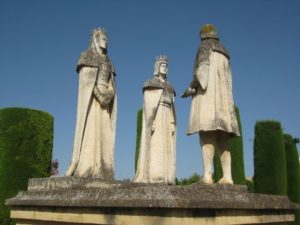
Columbus-in-Cordoba
One of the most notable figures in Cordoba history is Christopher Columbus, who in 1486, came here to ask for royal permission to lead an expedition to the Indies. His plea was successful, although the project did not get off the ground until May 1492.
Forgotten city till present
After the Middle Ages, Cordoba became something of a backwater. Its buildings were allowed to decay and there was little industry in the city. It was only properly rediscovered in the 19th century, when European travellers came here in search of history and architectural gems.
Exploring Cordoba
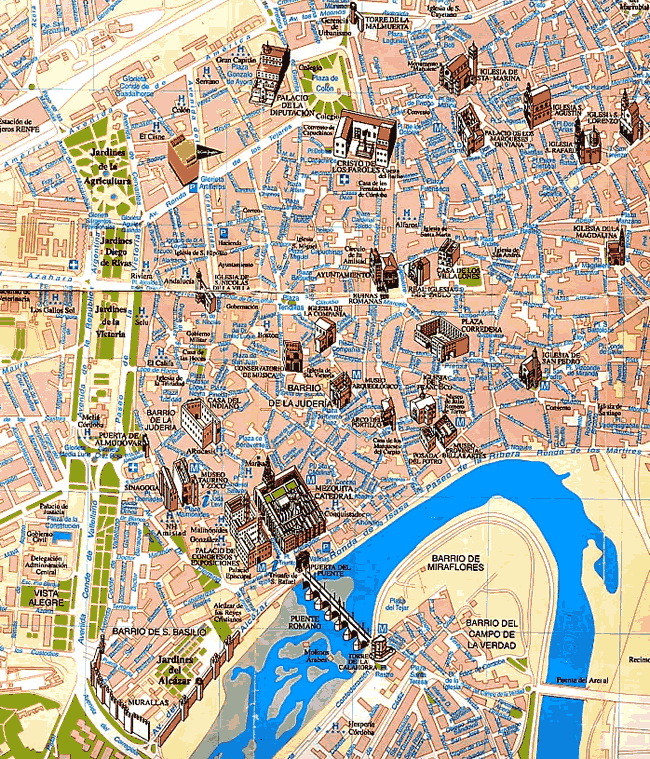
cordoba-map
Today most tourists tend not to venture far from the Old City district, an area that surrounds the Mezquita. Characterized by its maze of narrow alleys and streets, it is bordered to the south by the River Guadalquivir. North-west of the Mezquita is the Jewish Quarter. Its streets and buildings have a distinctly Moorish influence. North of the Old City is Cordoba’s modern district, which is centered around the Avenida del America and the Plaza de las Tendillas.
But we are not most tourists, so we will see more of Cordoba than rest.
Perfect Day in Córdoba, Spain: Mezquita, Alcazar, San Rafael, Punta Romana and more.
Mezquita
To start our visit to Cordoba, let’s go straight to its most famous sight: Mezquita, also known as Cathedral of Our Lady of the Assumption, or Church within a Mosque.
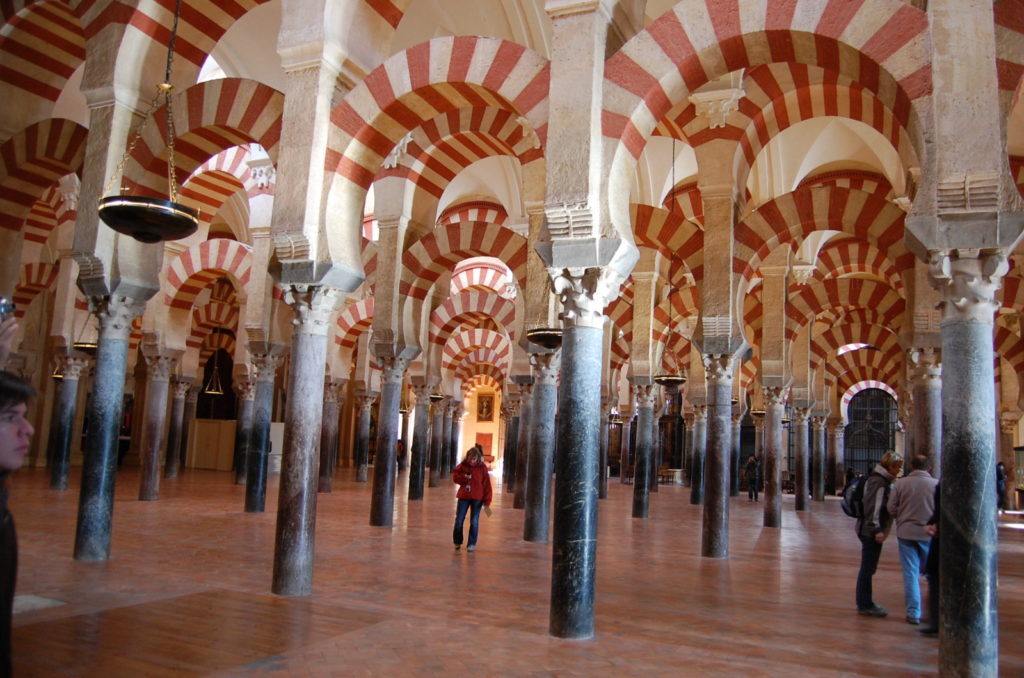
Mezquita
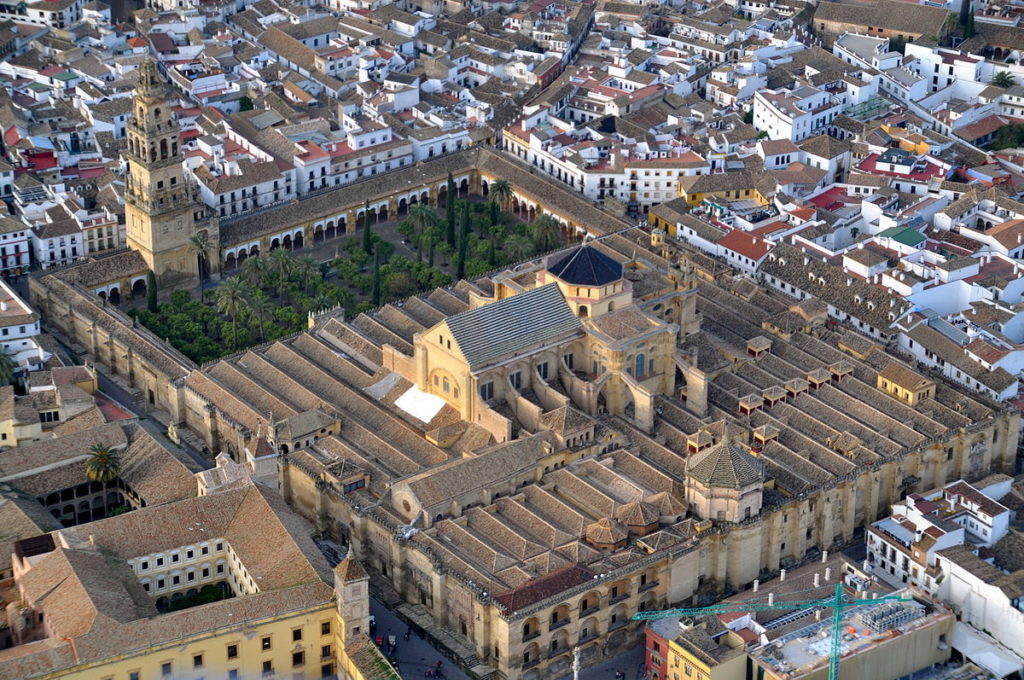
Mezquita_de_Córdoba
Cordoba was originally built by the Romans, but knew its most glorious period when it became the capital of El Andalus and the Great Mosque, better known as the “Mezquita”, was constructed.
Originally it was a Catholic church, but the Moorish kings turned it into a giant mosque starting in 784. It stayed a mosque until the Reconquista in 1236. Then the mosque was converted into a Catholic church by building a Renaissance cathedral nave in the middle of the enormous structure.
The Mezquita is the main reason why tourists come to Cordoba. It is the perfect mix of Roman, Gothic and Islamic architecture. It’s huge, It takes up a full city block.
The arches inside seem never ending, and when you discover the cathedral in the middle of the building, you can’t stop staring at its ceiling and decorations.
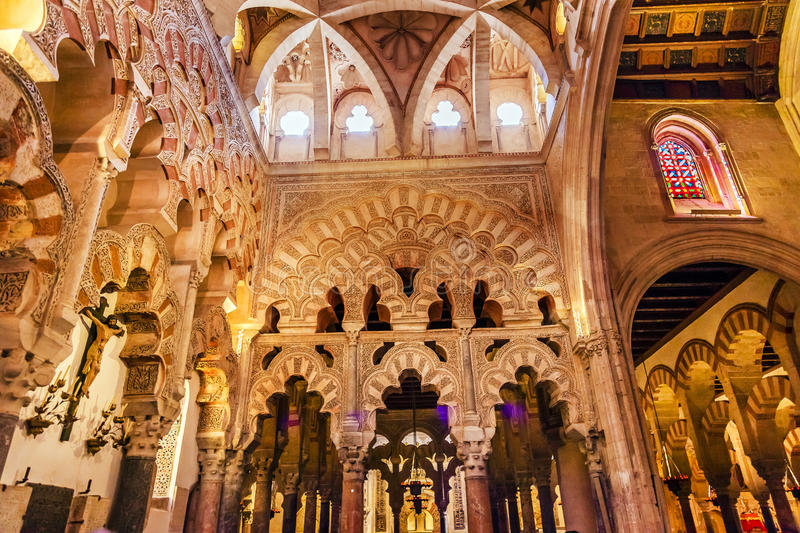
mezquita-cordoba-Spain
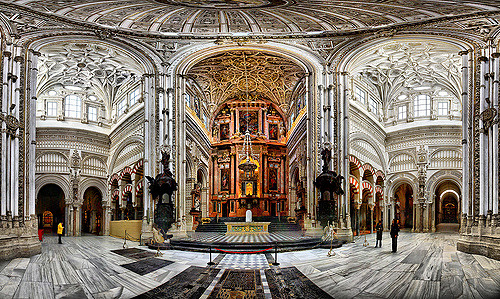
Church-and-Masgue
Don’t forget to make a walk around the orange tree courtyard!!!
It only costs a few extra euros to climb the tower and the view is well worth the extra steps and pocket change. You will enjoy the best views of Córdoba and the patio filled with orange trees below.
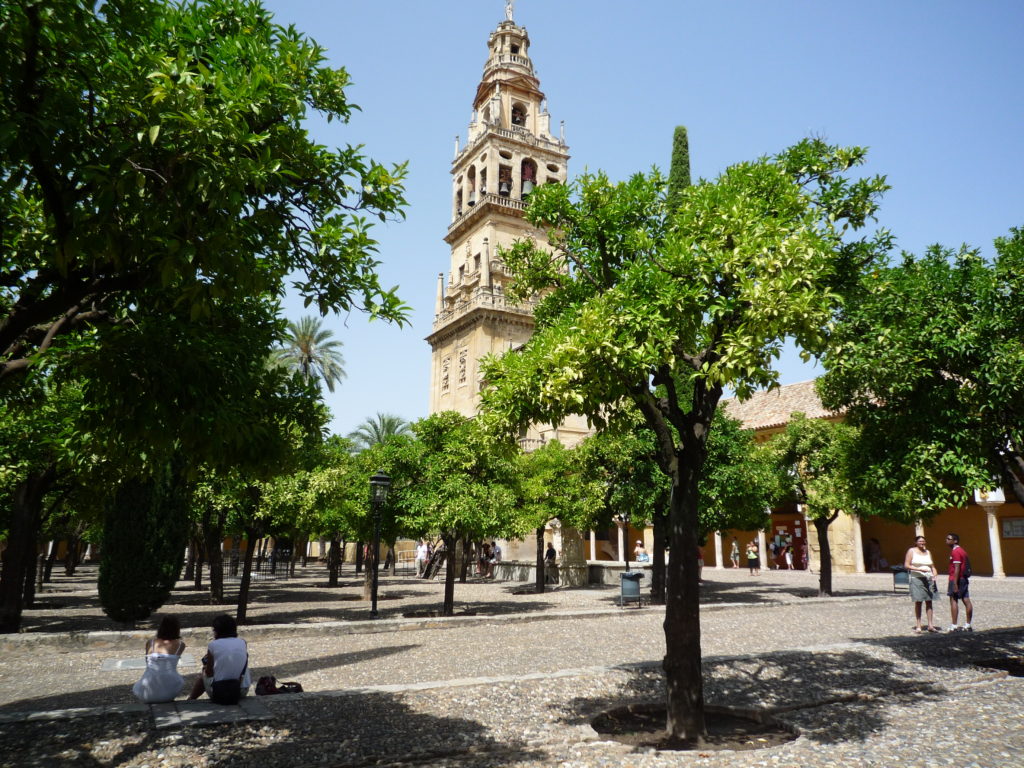
Orange-Gardens-Mezquita
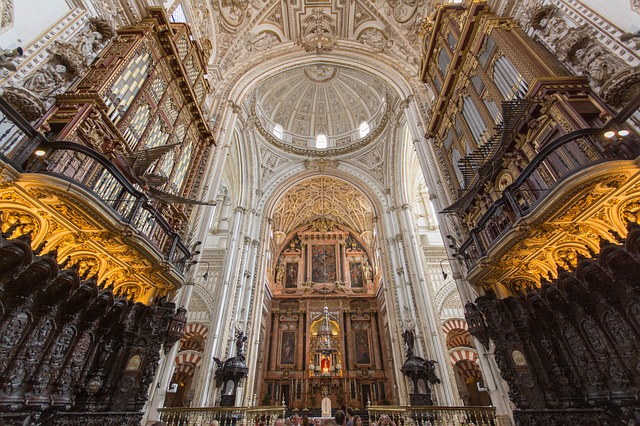
Cathedral-within-Masque-Cordoba
Few interesting tidbits:
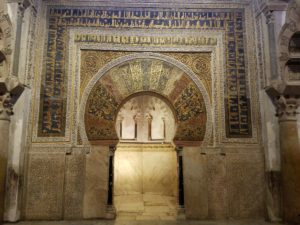
Mihrab
The Cathedral Tower used to be a Muslim minaret, and the main Cathedral’s Altar is placed at the angle to the original Mihrab (semicircular niche in the wall of a mosque that indicates the qibla; that is, the direction of the Kaaba in Mecca, and hence the direction that Muslims should face when praying). This way, forcefully converted Muslim could not pretend to pray while facing Mecca.
Get your tickets ahead of time online. This is a must see sight in Cordoba, so there will be lines during tourist season.
Alcazar
Next door to Mezquita is Cordoba’s second most famous sight: Alcazar. Alcazar means fortress in Spanish (that’s why there are many famous Alcazares in Spain). This Fortress of the Christian Kings dates back to medieval times and while it changed hands multiple times over the course of history, the main attraction today are the lovely gardens and the two towers where you can enjoy the view from above.
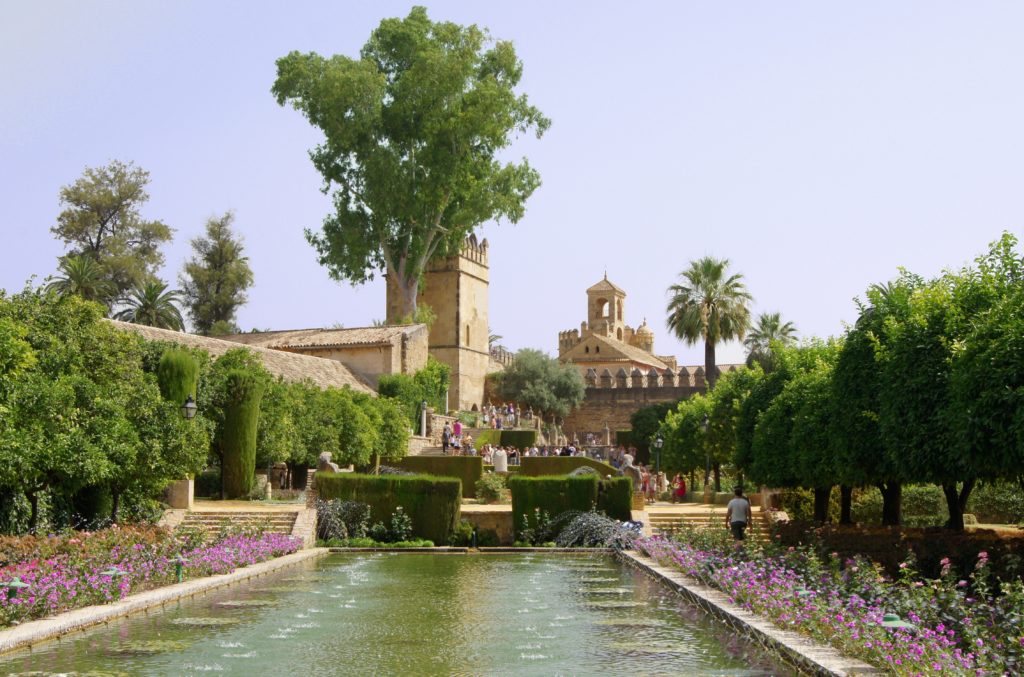
Alcazar-Cordoba
Water terraces fountains add to the tranquil atmosphere of the gardens. It is very peaceful and walking through the gardens gives you nice break after visiting Mezquia.
Sit down, relax and smell the flowers!
Narrow streets and Patios of Jewish Quarter:
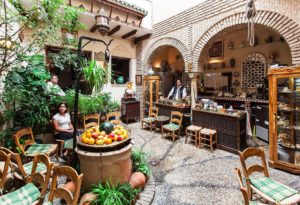
Patios of Cordoba
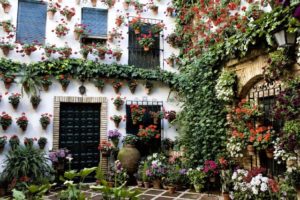
Patios of Cordob
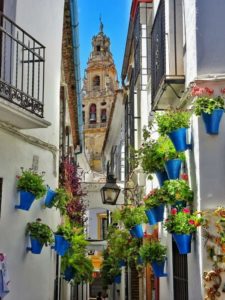
Cordoba-Calleja-de-las-Flores
From Alcazar, we headed North, towards, Plaza Corredera. This walk took us through narrow and picturesque streets of the Jewish Quarter. This is Cordoba at its best. I heard someone call it Instagram’s paradise!! Yet it is so true, you want to walk in into all open patios and courtyards, and take pictures of flowers and pottery richly decorating this area. If you only have some time left, you must take this walk.
There are many small restaurants hidden within open courtyard. They are gorgeous, and in the evening there is usually Flamenco performance.
Plaza Corredera
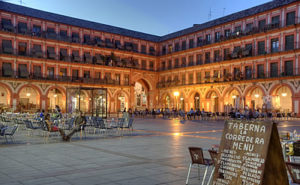
Plaza-Corredera-Cordoba
Plaza Corredera is a plaza mayor typical of central and northern Spain, but unique and rare in Andalucía. There are plenty of shops, restaurants and cafes that attract tourists and locals alike. It gets quite lively at sunset and after dark. Definitely a place worth checking out.
Lunch
On a way back, toward a riverfront, we walked into one of the courtyard restaurants that I mentioned before ,and took a chance on a menu. It was great! We enjoyed good wine and food in a shade of the courtyard, while listening to Flamenco music.
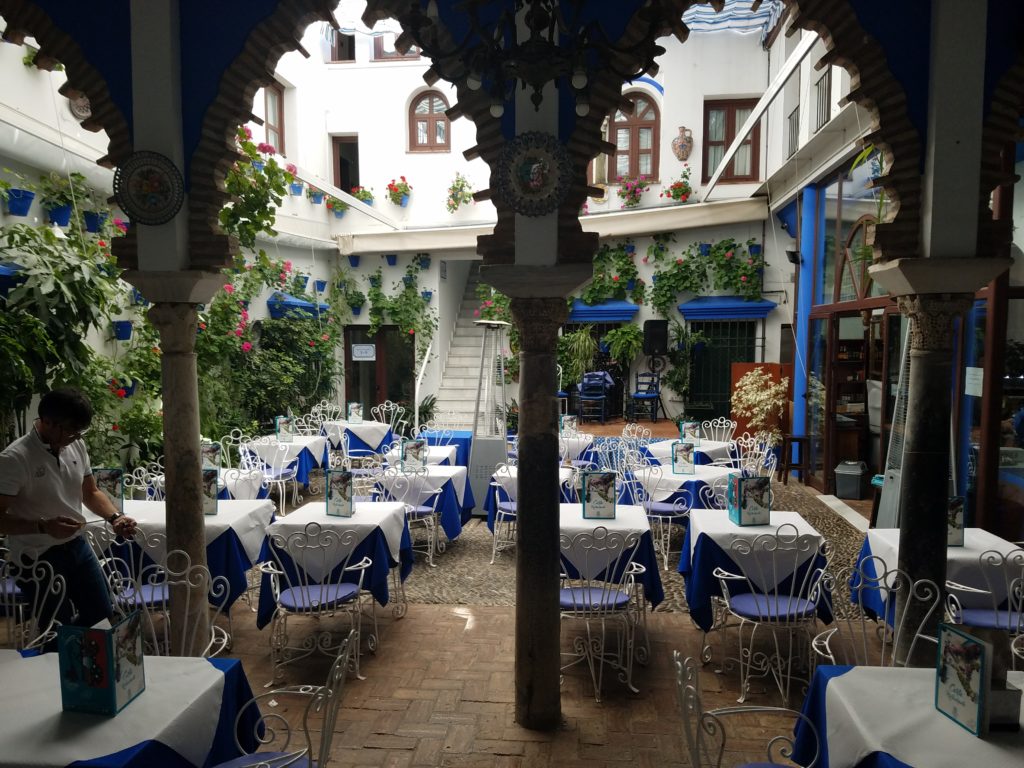
Lunch
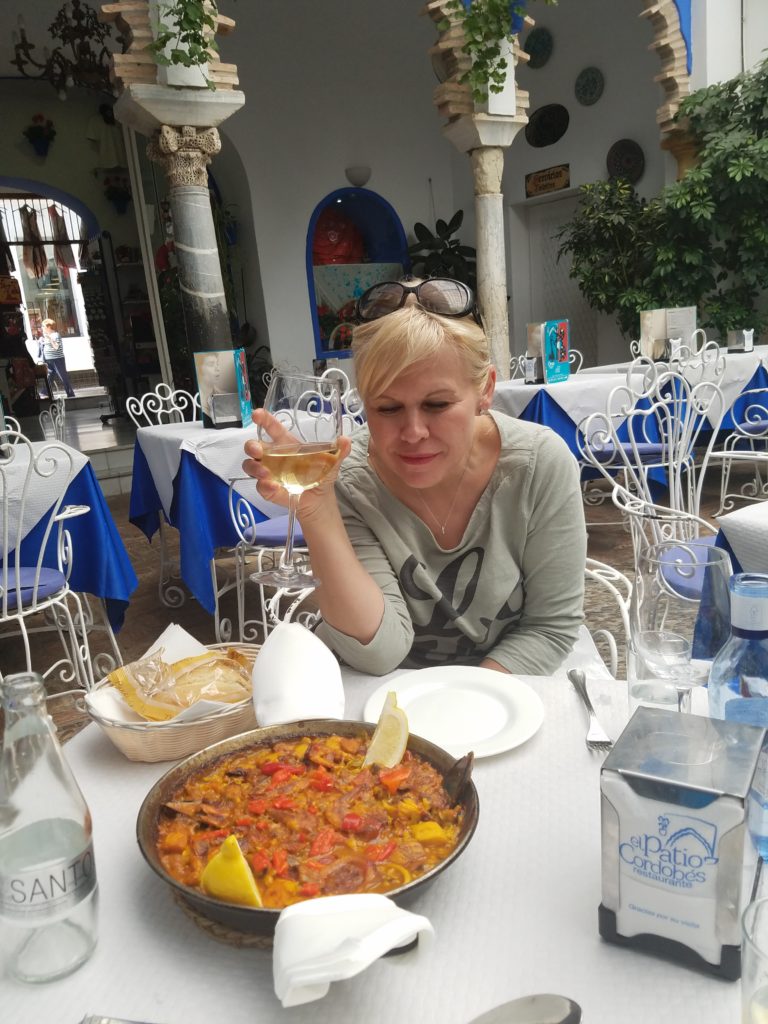
Lunch-and-wine
Sculpture (Triumph) and Church of San Rafael
An extremely significant event in the city’s history took place near the church of San Lorenzo: it was here that, in 1578, the Archangel San Rafael (St. Raphael) appeared to Father Roelas and swore that he would protect the city and its inhabitants. On that very spot, between the end of the 18th century and the start of the 19th, a church dedicated to the Archangel’s oath was built by Juan Antonio Cárdenas.
The impressive main entrance includes sculptures of San Rafael, San Acisclo and Santa Victoria (the Holy Martyrs who are patron saints of the city).
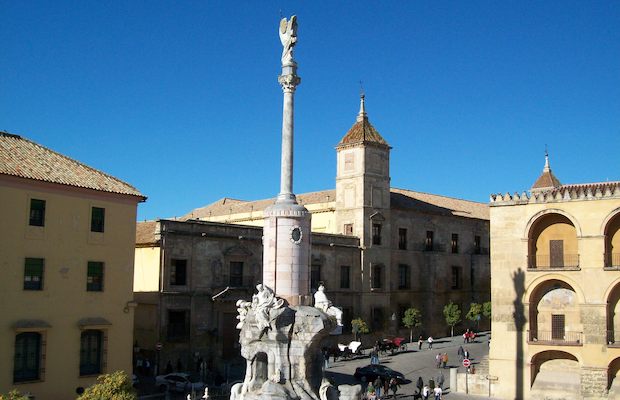
Patron-of-Cordoba-San-Rafael
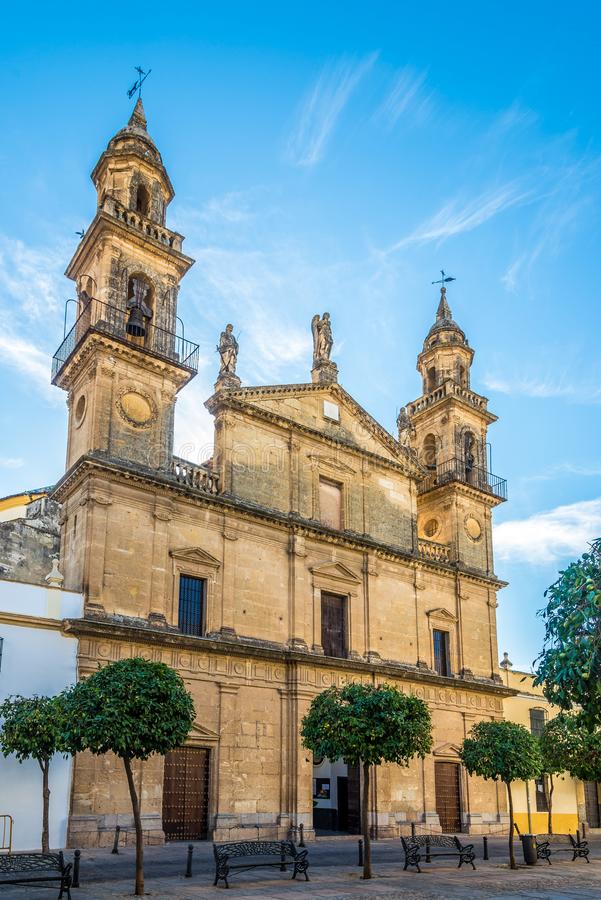
church-juramento-de-san-rafael-cordoba-spain
The Roman Bridge
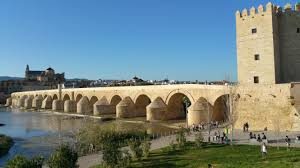
Roman-Bridge-Cordoba
The bridge was built by the Romans in the early 1st century BC, perhaps replacing a previous one in wood. It currently, after the Islamic reconstruction, has 16 arcades, one less than original ones, and a total length of 247 meters. The width is around 9 meters. The Via Augusta, which connected Rome to Cádiz, most likely passed through it. The bridge and the area are a great place to linger and spend time around, but are absolutely spectacular at night.
Puerta del Puente
On City’s side of the Roman bridge lies Puerta del Puente, or Bridge Tower or Gate. Many of these gates were constructed by Moors, as a part of the city’s defensive walls. If you have some time to see other gates in the city they are magnificent, especially Carmona Puerta de Cordoba.
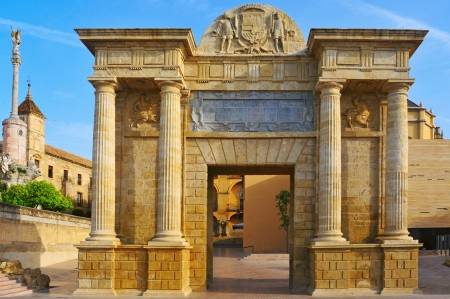
puerta-del-puente-in-cordoba-spain
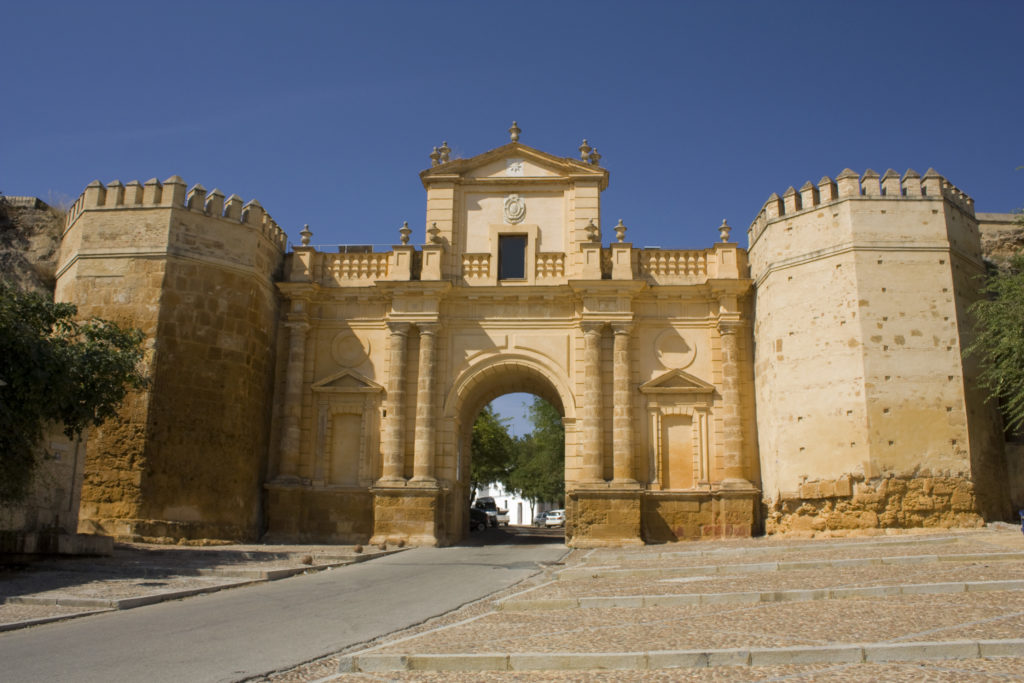
Carmona-Puerta-de-Cordoba
Tower of Calahorra
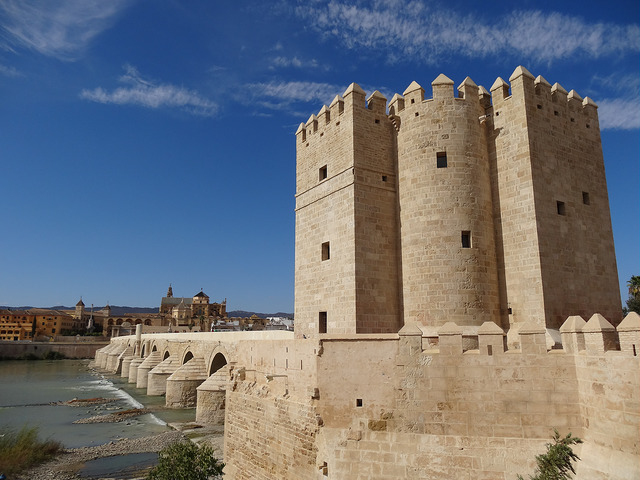
The-Calahorra-tower
Once you cross the bridge, you can’t but notice one of the lookout towers by the Roman Bridge, the Tower of Calahorra. It is another great spot to climb up and get a better vantage point for the landscape of Córdoba. As you contemplate the River Guadalquivir, it’s also important to note that in Roman times boats could go from Córdoba all the way to the Atlantic (nowadays the water level is too low.) It is an official historic site in Spain and, thanks to the thick stone walls, a perfect place to escape the sun if you are visiting in the summer!
With our perfect day in Cordoba almost over, now all we had to do, is wait for the sunset and take in some amazing sights of Cordoba at night.
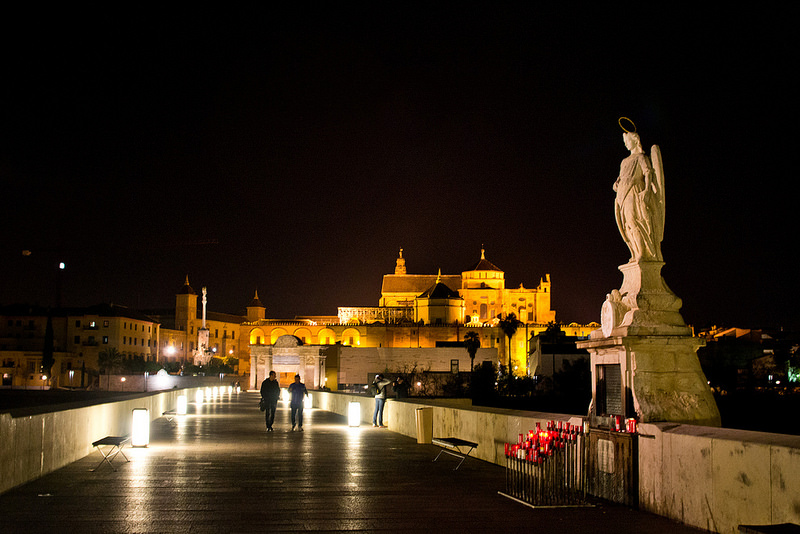
Cordoba-at-night
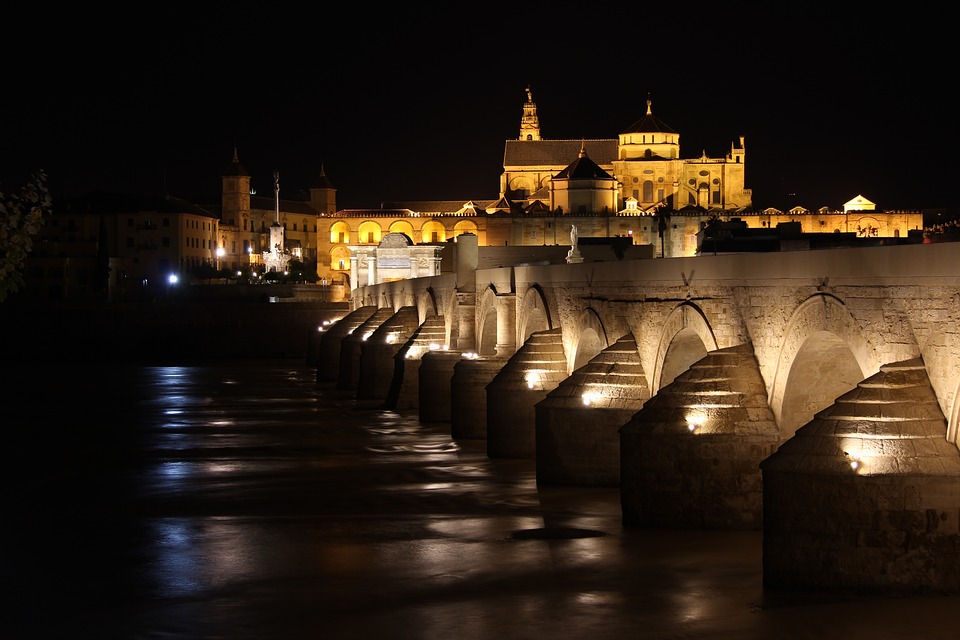
Cordoba-at-night


